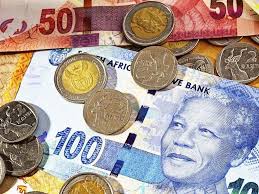The South African rand opened weaker on Tuesday morning as financial markets turned their focus to the upcoming interest rate decision by the South African Reserve Bank (SARB),the rand was trading at 17.9225 to the US dollar, which is about 0.3% lower than its closing level on Monday.
This movement comes as economists and investors anticipate that the SARB may ease monetary policy slightly. According to a report from the source, the central bank is widely expected to reduce its key interest rate by 25 basis points, bringing it down to 7.25%. The decision is scheduled for Thursday, and traders are watching closely for any signals about the central bank’s future stance.
Despite the minor weakening, the rand has shown signs of stability in recent weeks. It has recovered from earlier losses and now trades below the 18 per dollar mark, a psychological level closely monitored by investors. Analysts say the relative strength of the rand has been supported by cooling inflation figures and steady economic indicators.
Consumer inflation in South Africa fell below the SARB’s target range of 3% to 6% in April, giving the central bank more room to consider loosening its monetary policy. This has raised expectations that the SARB might shift away from the tight interest rate hikes seen in previous cycles aimed at controlling inflation.
In more positive news for the economy, the SARB released data on Tuesday showing that South Africa’s composite leading business cycle indicator rose by 1.1% month-on-month in March. The indicator is a key measure of expected future economic activity and a rise in the index often suggests improving confidence in the country’s business environment.
The bond market also reflected investor sentiment. South Africa’s benchmark 2030 government bond strengthened in early trading, with its yield falling by 2.5 basis points to 8.865%. Lower yields indicate rising bond prices, which often signal greater investor interest and improved confidence in the government’s financial outlook.
On the stock market, the Johannesburg Stock Exchange (JSE) Top-40 index was little changed during early trading hours. Traders appeared to be in a wait-and-see mode, awaiting the central bank’s decision and commentary on inflation, growth prospects, and global economic conditions.
South Africa’s monetary policy has been a balancing act in recent months. The SARB has had to juggle between stabilising the currency, controlling inflation, and supporting economic growth. If the interest rate is cut, it would be the first in the current cycle and could signal a shift toward a more growth-friendly approach, especially amid concerns about sluggish domestic demand.
The rand remains one of the most actively traded emerging market currencies and is highly sensitive to both local economic data and global market developments. Investors are also monitoring external factors such as US Federal Reserve policy decisions and commodity price movements, which influence demand for South African exports like gold, platinum, and coal.
Analysts say that while a 25 basis point rate cut is modest, it could boost investor sentiment in local financial markets and provide some relief to consumers and businesses struggling with high borrowing costs.
Market watchers expect volatility in the rand and bond markets to continue as the rate decision approaches. A surprise move or unexpected language from the SARB could lead to stronger market reactions.
